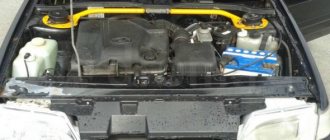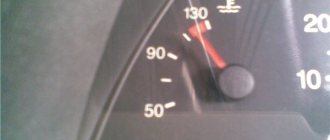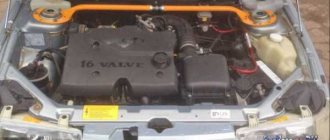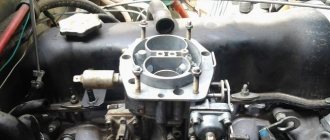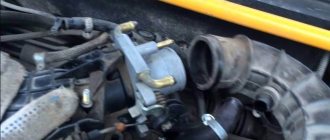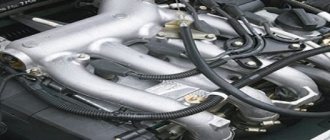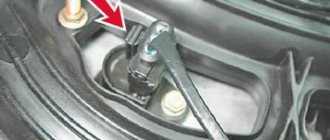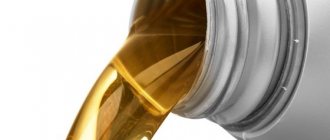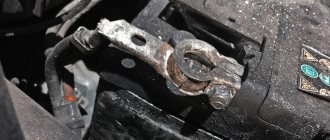Floating speed of a cold engine is a malfunction that occurs in both gasoline and diesel cars. It may be difficult to start, the engine idles unsteadily or stalls immediately. The speed may also fluctuate while driving, which is more typical for a diesel internal combustion engine.
We also recommend reading the article about diagnosing the fuel system of a diesel engine for air ingress. From this article you will learn what to do if there is air leaking into the fuel system.
Unstable idle speed on carburetor engines
Sudden jumps in speed on cold carburetor engines are “buried” in the carburetor, their causes are purely mechanical. Moreover, they pass after the carburetor is purged, although no malfunctions can be noticed. In fact, the trick lies in the entry of an unnoticeable speck into the carburetor channels: carried away by the flow, it reduces the cross-section of the nozzle, and the composition of the mixture “floats away”, followed by the speed. After some time, the speck shifts due to vibration - the composition of the mixture and the speed are normalized. There cannot be a periodicity of changes in speed here: all moments of change in speed are random.
The second possible reason why the speed of an unheated carburetor engine fluctuates is a leak in the accelerator pump. Under normal conditions, when the throttle is closed, no pressure is created in the accelerator pump chamber and its shut-off valve is closed. If the valve is leaking, the air flow that passes through the carburetor can create a vacuum. It is enough for gasoline to start dripping into the first chamber from the nozzle of the accelerator pump. Each such drop enriches the fuel mixture, and the idle speed jumps slightly.
If the revolutions fluctuate with sufficient amplitude, but slowly, the reason lies in the supply of fuel to the float chamber - the level drops and the mixture becomes leaner. The engine picks up speed on a lean mixture, then they smoothly return to normal. Reasons: jamming of the shut-off needle and float in the carburetor or insufficient pressure developed by the fuel pump at low speeds. In the first case, the fuel pressure at low speeds is unable to push through a needle stuck in the closed position, and after a jump in speed, the rising pressure becomes able to normally fill the float chamber. In the second case, at idle, the float chamber is not filled enough, after raising the speed, the level in it normalizes, and the speed drops - a cyclic change in the fuel level and speed begins.
Idle instability on cars with a “mechanical” flow meter
In older fuel injection systems, the mass fuel flow sensor was a flap installed in the cross-section of the intake manifold and connected to a contact potentiometer through a lever. The greater the air volume, the more the mass air flow sensor flap deflected.
Over time, the moving contact of the potentiometer wipes the contact track on the potentiometer board, and this happens in the area corresponding to the air flow at idle. As a result, when the motor is running, sharp voltage surges occur at the output of the mass air flow sensor. As soon as the contact slips onto the worn area of the track, the voltage drops (as if the air flow has dropped sharply), the injection system accordingly reduces the fuel supply, and the speed drops. Accordingly, the mass air flow sensor flap moves, the potentiometer contact moves to a whole place on the track - the signal increases, the injection system again increases the fuel supply, the mass air flow sensor again moves the sensor contact to the wiped section of the track... A cyclic floating of revolutions begins, which can only be eliminated by replacing the mass air flow sensor or modifying its board (the board is slightly is shifted in the housing so that the contact moves to the unworn radius of the contact track).
2- failure of the injection pump and injectors (for diesel engines)
On Renault diesel engines, problems with the high pressure fuel pump are possible. If the fuel injection pump does not create the required pressure, the fuel injection system into the chamber works with errors or does not work at all.
The reason should be sought in constant refueling with bad fuel, untimely replacement of the fuel filter, and the habit of driving “with a light bulb” (when the pump collects remaining fuel along the walls of the tank along with debris). Another reason for malfunctions in the operation of the fuel injection pump is corrosion or wear of its moving mechanical parts.
When the fuel injectors fail, not enough fuel enters the cylinder, it is poorly distributed throughout the chamber and does not burn completely - the engine runs unstable.
Solution. Diagnostics of the condition of injectors on a special stand, repair or replacement of failed injectors. Diagnosis of the condition of the injection pump, its overhaul (difficult to find a specialist) or replacement.
Floating speed on cars with electronic fuel injection
Here, the cause of unstable idle is air leaks into the intake manifold through the joints of the manifold itself (typical of plastic manifolds), vacuum hoses, and so on. When looking for the reasons for the floating speed on an injection engine, you need to start working by eliminating air leaks, spilling “suspicious” places with a carburetor cleaner spray or other liquid. When liquid gets into a leaky area, it acts as a temporary plug, which immediately affects the operation of the motor.
And malfunctions of the throttle position sensor affect the stability of the idle speed, and the source of the problems is the same as for “mechanical” flow meters: abrasion of the potentiometer track. Moreover, engines with a mechanical throttle drive are free from this problem, since at idle it is stationary and the TPS contact does not move.
On engines with an “electromechanical” (the damper drive is a cable, but the idle adjustment is carried out by a built-in servo drive that corrects the position of the damper) and an “electronic” throttle, at idle the throttle constantly moves within small limits, wearing out the TPS contacts. Only chokes with contactless sensors are free from this. The main problem is that such throttles are monoblocks, where replacement of one throttle position sensor is not provided - the throttle assembly has to be replaced.
Something else useful for you:
see also
Comments 20
Hello everyone, guys, please tell me what the reason may be, I'm already tired of overpaying the mechanics for the engine 405 euros 2 2006, rebuilt the engine, compression 14-15, changed the throttle, cleaned the injectors, changed all the engine wiring spark plugs, spark plug wires, coils also work well, fuel pump pressure is good at idle the engine is shaking non-diagnostic mechanics cannot give an exact answer, everyone just assumes, and I change everything they say, but the problem remains.
There's an air leak somewhere... Maybe it's not in phase... Or the IAC is dirty...
No choke 100 percent ignition set according to the pattern injectors new clean engine wiring new spark plugs and spark plug wires also new computer connected another same story this is what the Diagnostics gave
Tightness... It’s either the valve, or the rubber on the injector is torn, or maybe the hydraulic valve is stuck!
No choke 100 percent ignition set according to the pattern injectors new clean engine wiring new spark plugs and spark plug wires also new computer connected another same story this is what the Diagnostics gave
The template can break... For the ideal phase, you need to put split stars...
The stars are normal and the ignition is set correctly. What is this? And I also want to clean the air flow sensor, but I don’t know how to clean it?
The idle air control is located on the receiver... If the mass air flow sensor is not plated, you shouldn’t go there... You’ll break the thread and hello to the new sensor...
Hi all! 405 dv euro 2 had the same problem, the speed was floating when starting the dv 2000-3000 rpm, even on gas it would stall while driving (I solved the problem! I removed the IAC and cleaned it (first I sprayed it for the carbs, then I sprayed it) and all was well)
I bought a 2007 gazelle not long ago, long-wheelbase, 405 doors, simple, with two reels. It turned out to be a problem, the revolutions fluctuate, slowly rise to 1500 and drop sharply to 1000. There were such tips as changing the mass air flow sensor on the pipe from the air filter, the throttle sensor, the idle speed controller, and cleaning the throttle valve. The reason turned out to be simple, right under the intake manifolds, a rupture of the adsorber (absorber) hose (which takes gasoline vapors from the tank). There was simply air leaking into the intake manifold, and the computer and sensors reacted at such speeds.
I don’t have an adsorber... the pipe there is plugged...
Read also: Agm batteries what are they
Friend, I greet you. I studied your b.z. I have the same crap with the revs when warming up, either gasoline or gas, 2000 rpm. Then 900-1000rpm. Moreover, this can happen even in traffic jams, the increase in revolutions. Yells like a bastard. I put the gear in gear and slowly move away. I washed the rxx, d throttle. The same crap. I'm going to go buy a new throttle sensor today. The engine sputters at idle, I changed everything that was possible. The service department said that when they changed the chains, the previous owner was thrown into two links; I really don’t know which way. Could this be because of this? the engine is like yours. yes. the dmrv is new. the tubes are all new.
quite possibly because of the chains. I solved my problem... by changing and cleaning the entire fuel system... new pump, new filters... all the gaskets are in the air... I changed two throttle position sensors... so far everything seems to be working...
Commercial vehicles often come to our service center, namely GAZelle cars, and today is no exception. An onboard workhorse with a ZMZ 405.22 Euro-2 engine pulled into the diagnostic post. The owner of the car (or rather the third owner) after purchasing it noticed that the car was driving somehow wrong. The revolutions dance as they please: they rise and fall. The check light blinks like crazy, the car jerks and shakes. In general, the car lives its own life, and something needs to be done about it

